By Bill Bartholomew
Talk Host/Podcaster/Journalist/Musician
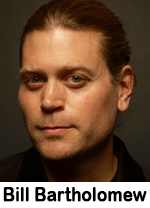 Folks in the Gen Z and millennial demographics are heavily engaged in political issues, care about news in their communities and the world, and are constantly bombarded with content. So why are they less likely to tune into and interact with news/talk radio than older demographics?
Folks in the Gen Z and millennial demographics are heavily engaged in political issues, care about news in their communities and the world, and are constantly bombarded with content. So why are they less likely to tune into and interact with news/talk radio than older demographics?
Talk radio has historically skewed older, and from an ad portfolio standpoint, is often targeted at the coveted 35-54 and 55+ demographics. However, in a world where social media influencers and podcasters supply information to millions of young consumers, news/talk radio should be able to effectively compete for the ears of younger generations in a comparable, if not expanded way.
For all of the anecdotal and hard evidence that terrestrial radio may be trending in a downward direction, the format continues to have a vast reach. It is convenient to engage with it in automobiles, and occasionally in home or office settings. Yet, while younger generations listen to radio, news/talk is not the format that they turn to by and large.
Unlike many digital-first content producers, radio retains a unique quality: authority. By virtue of editorial standards, FCC regulation and brand – things that social media and podcasts often lack – radio has the unique ability to deliver credible, vetted, nuanced and universally trustworthy content that can instantaneously adapt to meet the needs of the moment. This is true in everything from natural disasters to rapidly evolving breaking news stories, providing a channel for immediate, reactionary insight and analysis.
There are several steps that news/talk radio should pursue in earnest to adapt to the current climate of content consumption, particularly by younger listeners, that can reach, and most importantly, retain broader, younger, more diverse and more engaged audiences.
- Introduce younger people into the conversation.
Too often, Gen Z and millennials are skewered by older hosts, mocked for their perceived naivety, unchecked optimism and me-first approach. While some of these qualities can be accurate, that approach reflects a disconnect between older generations and the experience of younger ones. Millennials and Gen Z have grown up in a post-9/11 world replete with “endless wars”, the fallout from the 2008 financial crisis, runaway student debt, a massive housing crisis, the mental health stressors of social media, Covid19’s impact on traditional youth experiences, climate change, a deeply bifurcated political environment and a constantly evolving quest for social justice. Through these experiences, younger generations offer an important perspective that should be assigned the same news value as experts from older generations.
Are you discussing shifts towards electric vehicles? Bring on someone from Gen Z to share their perspective on why steps towards carbon neutrality are important to them. Engaging a conversation on the president’s approval rating? Perhaps younger conservative and leftist voices should be included in the conversation. Discussing immigration? How about the perspective of a younger member of a Latino organization?
By giving younger generations and more diverse guests a platform, stations can simultaneously expand their content and reach. With consistency, the station’s brand will become more familiar to younger potential listeners who may be inclined to tune in to hear someone who shares their identity and perspective on – here’s that word again – a platform of authority. Let the guest do the work of establishing the credibility and importance of your station or talk show to younger audiences by posting about their appearance on social media, sharing audio clips and mentioning to their peers. It will build familiarity and trust among those generations, who in turn, will begin to tune in on a more regular basis.
Stations should also consider bringing more younger, competent voices into on-air roles, whether that be through reporting, segments, fill-in hosts, weekend shows or full-time hosts.
- Meet the audience where they are: their phones.
As mentioned above, the convenience of simply turning on AM/FM radio is highly appealing in automobiles, though as Apple Carplay continues to adapt and evolve, digital-first content is likely to become as simple and convenient in the near future.
Talk radio needs to make consuming their product on smartphones as simple and direct as turning on a traditional radio. This means no clunky websites, no lengthy pre-roll spots, a reliable stream connection and a “one touch” means of turning on and off the station. This should also mean expanding talk shows to high-quality video livestreams, following in the footsteps of the top YouTube and Twitch performers; developing unique content for TikTok and Instagram; building podcasts that are focused on specific issues, and; providing interaction via text and chat.
Radio has the ability to be the ultimate livestreamer, social media influencer and podcaster, but rarely harnesses these platforms in a meaningful way.
It is not enough to simply strive to “expand a digital presence”; stations and shows must engage in the hard work of building platform-specific content with their brands.
- Music, cultural references and themes for the modern age.
A few weeks ago on a seemingly benign episode of the TV show FOX NFL Sunday, panelists Jimmy Johnson and Terry Bradshaw offered an example of the type of cultural adaptation that sophisticated writers and producers provide their brands. While describing a fight between two football players, Mr. Johnson said something to the effect of “when it comes to these two, what’s that Taylor Swift song?”, and then in synch with Mr. Bradshaw, “bad blood!”. It is highly unlikely that these two 70+ men listen to Taylor Swift’s music with any regularity or would simultaneously pull the “Bad Blood” reference. Yet, with excellent preparation that played into the greater cultural moment as well as the specific, current Taylor Swift/NFL overlap, in a six-second span, FOX NFL Sunday was able to give the illusion that their panelists are contemporary, hip and plugged into “what is going on”. Is your station or show plugged into what’s going on? Do you use contemporary music for bumps? Are your images – including headshots and social content – modern, interesting and engaging or are they more akin to a miscellaneous real estate agent? You are a performer in an entertainment business that, while certainly paying homage to the past and lineage of the industry, must be contemporary in aural and visual presentation. This goes for everything from wardrobe on video and in photo to fonts on graphic design.
How often do you or your producer read Pitchfork to learn about new music that is breaking this week? How often do you or your producer read Variety to understand major trends that are happening in the broader entertainment industry? What live events are you broadcasting from, covering and building partnerships with? You should strive to be cutting edge.
- We need a friend now more than ever.
This is something that goes for all audiences, but particularly for younger ones. It’s OK, in fact, great to be yourself, present yourself from your generation and retain the authoritative stance that has built your brand. Take a look at the success that sports talker Mike Francesa enjoyed by leaning into his persona – and in turn – developing legions of younger listeners that fell in love with his dad-like delivery and frequent meltdowns.
Few things are as uncomfortable to see as a 40+ person dressing or acting like a teenager. Younger listeners want that senior, experienced, trusted friend to entertain them, inform them, and at times, tell them that everything is going to be OK. You can help make sense of the world for younger audiences, something that is absolutely essential in the modern era.
Through attracting younger listeners by including them in the conversation, effectively delivering content on smartphones, presenting a cutting-edge entertainment product and continuing to serve as a trusted friend, news/talk radio can greatly expand its reach, relevance and revenue.
To that point, some younger listeners who discover a radio station or show via any of the above entry points will likely work backwards to the traditional AM/FM dial. Like the resurgence of vinyl records, AM radio in particular has the opportunity to become a hip delivery format for discerning younger listeners.
The big question is: are radio companies, stations and hosts prepared to do the hard work of reimaging their product?
Share this with your network



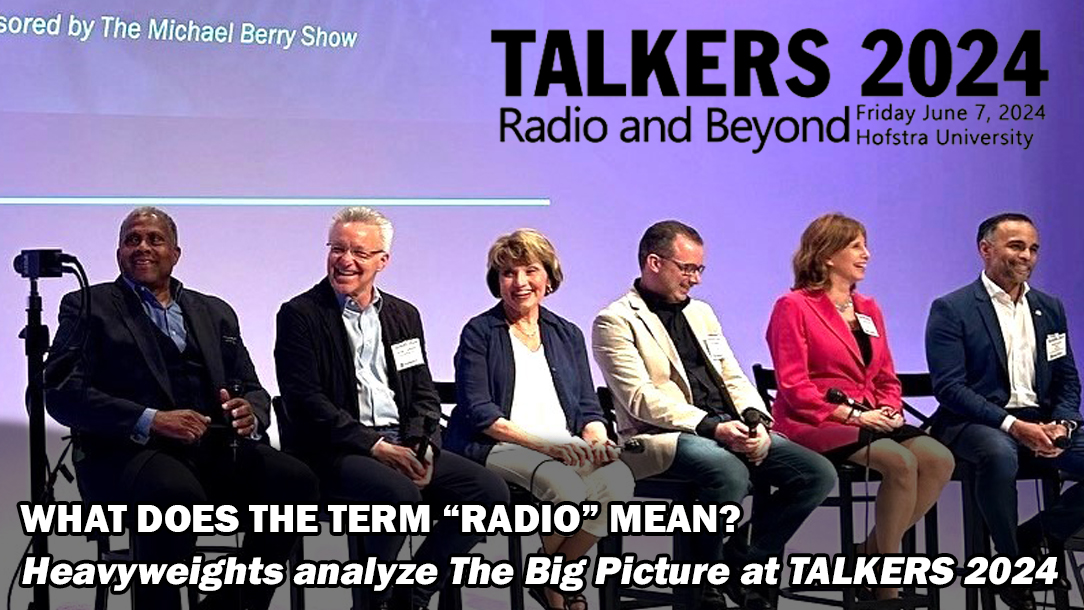
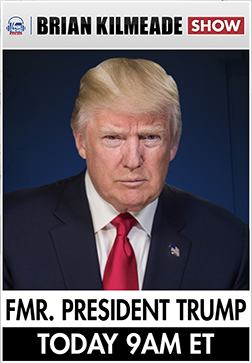 hour appearance, Trump did not bring up the matter of Joe Biden’s health but stated that he didn’t care whether Biden stays in the race as the Democratic nominee or not, believing that he has the voter support to beat any Democrat because they all share the same “radical lunatic” policies. He also told Kilmeade that he plans to announce his vice-presidential candidate pick just before next week’s Republican National Convention in Milwaukee. When asked if the pick would be influenced by whether or not Biden drops out of the race, Trump responded, “No” adding, VP Kamala Harris is “a disaster.” Kilmeade pressed the former president on a number of issues including NATO, immigration, and the economy. Trump stated that his good relationship with Putin is “a good thing” because it’ll keep us out of the growing danger of World War III and the only reason NATO members are now willing to pay their fair share of costs is because they feel threatened by the increased danger of war that has been heightened by the policies of Biden.
hour appearance, Trump did not bring up the matter of Joe Biden’s health but stated that he didn’t care whether Biden stays in the race as the Democratic nominee or not, believing that he has the voter support to beat any Democrat because they all share the same “radical lunatic” policies. He also told Kilmeade that he plans to announce his vice-presidential candidate pick just before next week’s Republican National Convention in Milwaukee. When asked if the pick would be influenced by whether or not Biden drops out of the race, Trump responded, “No” adding, VP Kamala Harris is “a disaster.” Kilmeade pressed the former president on a number of issues including NATO, immigration, and the economy. Trump stated that his good relationship with Putin is “a good thing” because it’ll keep us out of the growing danger of World War III and the only reason NATO members are now willing to pay their fair share of costs is because they feel threatened by the increased danger of war that has been heightened by the policies of Biden. 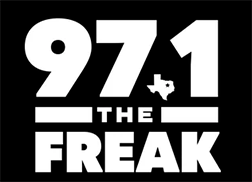 station after retiring from Cumulus Media’s crosstown sports talker KTCK-AM/FM “The Ticket” tells the Observer that he and castmates Julie Dobbs and Jeff Cavanaugh were let go on Friday (4/26). Rhyner says, “I could be standing at the New Mexico border and still see this coming. It’s a feeling that I and plenty of others at the station had been getting for some time now. iHeartRadio is a music company that really doesn’t do that much talk radio, and the talk radio they do is not local or locally originated, and they got caught into something [97.1 The Freak] they didn’t know anything about, and they were kind of overwhelmed by it, and they decided that ‘this is not our bag.’” Whitt’s Athlon story noted that “lagging ratings” and the talent expense [high overhead] had the station in corporate’s fiscal sights.
station after retiring from Cumulus Media’s crosstown sports talker KTCK-AM/FM “The Ticket” tells the Observer that he and castmates Julie Dobbs and Jeff Cavanaugh were let go on Friday (4/26). Rhyner says, “I could be standing at the New Mexico border and still see this coming. It’s a feeling that I and plenty of others at the station had been getting for some time now. iHeartRadio is a music company that really doesn’t do that much talk radio, and the talk radio they do is not local or locally originated, and they got caught into something [97.1 The Freak] they didn’t know anything about, and they were kind of overwhelmed by it, and they decided that ‘this is not our bag.’” Whitt’s Athlon story noted that “lagging ratings” and the talent expense [high overhead] had the station in corporate’s fiscal sights. 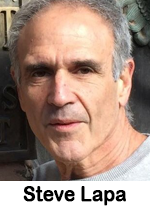 Time to thank the lawyers in the Donald Trump trial for once again proving beyond any doubt the power of talk radio.
Time to thank the lawyers in the Donald Trump trial for once again proving beyond any doubt the power of talk radio.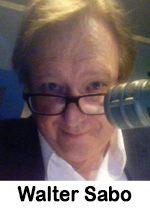 It seems every hour Nielsen and Pierre Bouvard of Cumulus fame (formerly of Westwood One) put out a release stating that radio is just fine, thank you. Radio is more persuasive than TV, direct mail, streaming and print. Radio is a proven success for over 100 years. Most of the buildings housing Procter & Gamble were built on radio – not TV – advertising success. Happily, P&G realized radio’s clout and is now a dominant radio advertiser – again!
It seems every hour Nielsen and Pierre Bouvard of Cumulus fame (formerly of Westwood One) put out a release stating that radio is just fine, thank you. Radio is more persuasive than TV, direct mail, streaming and print. Radio is a proven success for over 100 years. Most of the buildings housing Procter & Gamble were built on radio – not TV – advertising success. Happily, P&G realized radio’s clout and is now a dominant radio advertiser – again!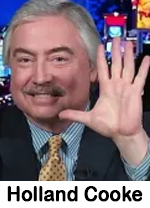 For spring break this year, Sarah and I revisited Sandals Grand Bahamian all-inclusive resort – NOT inexpensive, and very worth it. We’ve already booked same-week-next-year, and we think we know who we’ll see there then.
For spring break this year, Sarah and I revisited Sandals Grand Bahamian all-inclusive resort – NOT inexpensive, and very worth it. We’ve already booked same-week-next-year, and we think we know who we’ll see there then.

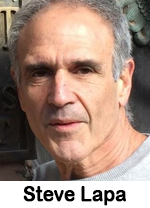 Have we passed the disappointment of 2023?
Have we passed the disappointment of 2023?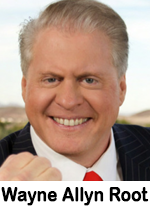 candidate Nikki Haley come in behind “None of the Above Candidates.” (“None of the Above Candidates” is choice that has been on Nevada ballots since 1975.) Root tells TALKERS that he came up with the strategy of convincing his audience to vote “None of the Above” to support Donald Trump and claims, “This is Exhibit A for the power of talk radio. Look at the vote totals. The number of ‘None of the Above’ voters almost exactly matches the number of listeners to my Vegas and statewide Nevada radio show. We did this. My Nevada audience almost single-handedly ended Nikki’s presidential ambitions.”
candidate Nikki Haley come in behind “None of the Above Candidates.” (“None of the Above Candidates” is choice that has been on Nevada ballots since 1975.) Root tells TALKERS that he came up with the strategy of convincing his audience to vote “None of the Above” to support Donald Trump and claims, “This is Exhibit A for the power of talk radio. Look at the vote totals. The number of ‘None of the Above’ voters almost exactly matches the number of listeners to my Vegas and statewide Nevada radio show. We did this. My Nevada audience almost single-handedly ended Nikki’s presidential ambitions.”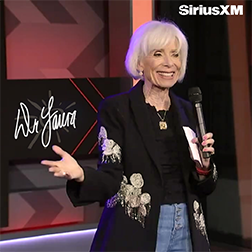 follows a multi-year advertising sales and production partnership between the two organizations. Terms were not announced. Crossover Media Group managing member Sue Freund states, “Throughout her more than four decades in talk radio and now podcasting, Dr. Laura has amassed an enormous following with her frank, direct, captivating style, which is sometimes provocative, always interesting and insightful, and never dull. After many years of working with her and her team at Take On The Day, we’re proud to expand our relationship and commitment to her programs, and to continue to grow our presence as a leading partner to the nation’s top audio-talk hosts.” Take On The Day LLC president Geoff Rich comments, “Crossover Media Group’s investment in Take On The Day adds so much to our ability to reach more listeners and help more sponsors. With Sue and her partners Ron Hartenbaum and Scott Calka joining the management team, we are supercharging the future of the Dr. Laura programming and brand.”
follows a multi-year advertising sales and production partnership between the two organizations. Terms were not announced. Crossover Media Group managing member Sue Freund states, “Throughout her more than four decades in talk radio and now podcasting, Dr. Laura has amassed an enormous following with her frank, direct, captivating style, which is sometimes provocative, always interesting and insightful, and never dull. After many years of working with her and her team at Take On The Day, we’re proud to expand our relationship and commitment to her programs, and to continue to grow our presence as a leading partner to the nation’s top audio-talk hosts.” Take On The Day LLC president Geoff Rich comments, “Crossover Media Group’s investment in Take On The Day adds so much to our ability to reach more listeners and help more sponsors. With Sue and her partners Ron Hartenbaum and Scott Calka joining the management team, we are supercharging the future of the Dr. Laura programming and brand.” radio pros Chris Merrill and Joe Huizenga. Bonneville Phoenix SVP and market manager Ryan Hatch says, “We are thrilled to add new shows that will keep our community informed and connected at such an important time. In addition to being one of the most dynamic and fastest growing cities in the country, Phoenix is also the epicenter of the 2024 election with Arizona being a key battleground state.” St. James served with KTAR-FM from 2010-2020. Merrill hosted a local show on the station from 2014-2017. Huizenga is currently the assistant program director and is a familiar voice as a fill-in host. Station PD Martha Maurer adds, “I am excited to welcome back Bruce and introduce Chris and Joe to our already impressive news and talk teams. This new lineup will bring exciting new energy and depth to our live and local coverage, both on-air and on our growing digital platforms.”
radio pros Chris Merrill and Joe Huizenga. Bonneville Phoenix SVP and market manager Ryan Hatch says, “We are thrilled to add new shows that will keep our community informed and connected at such an important time. In addition to being one of the most dynamic and fastest growing cities in the country, Phoenix is also the epicenter of the 2024 election with Arizona being a key battleground state.” St. James served with KTAR-FM from 2010-2020. Merrill hosted a local show on the station from 2014-2017. Huizenga is currently the assistant program director and is a familiar voice as a fill-in host. Station PD Martha Maurer adds, “I am excited to welcome back Bruce and introduce Chris and Joe to our already impressive news and talk teams. This new lineup will bring exciting new energy and depth to our live and local coverage, both on-air and on our growing digital platforms.” If you’ve been seeing CES coverage on network and cable newscasts this week, you’ve heard it called “the Consumer Electronics Show,” despite we-the-media being told not to. They want us to say “CES,” although, years ago, the Consumer Electronics Association changed its name to the Consumer Technology Association, not its first rebrand.
If you’ve been seeing CES coverage on network and cable newscasts this week, you’ve heard it called “the Consumer Electronics Show,” despite we-the-media being told not to. They want us to say “CES,” although, years ago, the Consumer Electronics Association changed its name to the Consumer Technology Association, not its first rebrand.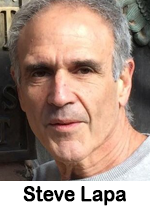 How many times will we research the same subject and come to the same conclusion?
How many times will we research the same subject and come to the same conclusion?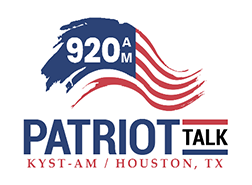 The lineup includes Westwood One talk hosts Dan Bongino, Chris Plante and Rich Valdes; Starnes Media Group’s Todd Starnes; FOX News Radio’s Guy Benson, Newsmax’s Rob Carson, and longtime Pittsburgh TV and radio personality Wendy Bell. It will also use FOX News Radio for network news. Hispanic Broadcasting president Matthew Velasquez says, “We’re excited to bring Houston listeners a better choice in news/talk radio. The mission of ‘Patriot Talk 920 AM’ is to become the leader in conservative talk radio with programming that reflects our core values of family, faith and freedom.” For more information, contact Steve Lapa at
The lineup includes Westwood One talk hosts Dan Bongino, Chris Plante and Rich Valdes; Starnes Media Group’s Todd Starnes; FOX News Radio’s Guy Benson, Newsmax’s Rob Carson, and longtime Pittsburgh TV and radio personality Wendy Bell. It will also use FOX News Radio for network news. Hispanic Broadcasting president Matthew Velasquez says, “We’re excited to bring Houston listeners a better choice in news/talk radio. The mission of ‘Patriot Talk 920 AM’ is to become the leader in conservative talk radio with programming that reflects our core values of family, faith and freedom.” For more information, contact Steve Lapa at  Have you tried the $7 cup of coffee at Starbucks?
Have you tried the $7 cup of coffee at Starbucks?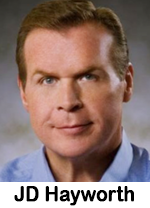 Phoenix as host of the 3:00 pm to 5:00 pm talk show “All Right Now!” on CRC Broadcasting Company’s KFNN-AM. CRC founder Ron Cohen says, “JD coming home to KFNN is a watershed moment for our station and all Arizona radio listeners. With so much interest in the 2024 election and Arizona’s growing notoriety as a key battleground state, the timing could not be better to bring JD back to host a daily show. No Valley radio host possesses JD’s credentials in both broadcasting and politics.”
Phoenix as host of the 3:00 pm to 5:00 pm talk show “All Right Now!” on CRC Broadcasting Company’s KFNN-AM. CRC founder Ron Cohen says, “JD coming home to KFNN is a watershed moment for our station and all Arizona radio listeners. With so much interest in the 2024 election and Arizona’s growing notoriety as a key battleground state, the timing could not be better to bring JD back to host a daily show. No Valley radio host possesses JD’s credentials in both broadcasting and politics.” Folks in the Gen Z and millennial demographics are heavily
Folks in the Gen Z and millennial demographics are heavily 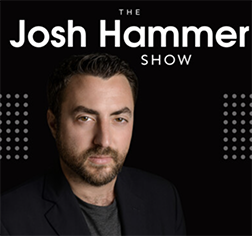 anchored by Newsweek senior editor-at-large Josh Hammer. Newsweek says the program’s goal is to “navigate the converging realms of politics, law, and culture while deliberating on the evolution of American conservatism. Hammer, with his background as a constitutional lawyer, intends to present commentary accompanied by interactions with contemporary conservative thought leaders.” Newsweek director of radio and podcasting Jesse Edwards adds, “Josh Hammer is going to be the next big voice in conservative talk radio, and we couldn’t be more thrilled to bring his powerful message to the airwaves of Seattle, and beyond.”
anchored by Newsweek senior editor-at-large Josh Hammer. Newsweek says the program’s goal is to “navigate the converging realms of politics, law, and culture while deliberating on the evolution of American conservatism. Hammer, with his background as a constitutional lawyer, intends to present commentary accompanied by interactions with contemporary conservative thought leaders.” Newsweek director of radio and podcasting Jesse Edwards adds, “Josh Hammer is going to be the next big voice in conservative talk radio, and we couldn’t be more thrilled to bring his powerful message to the airwaves of Seattle, and beyond.” Ready to go back to the future?
Ready to go back to the future?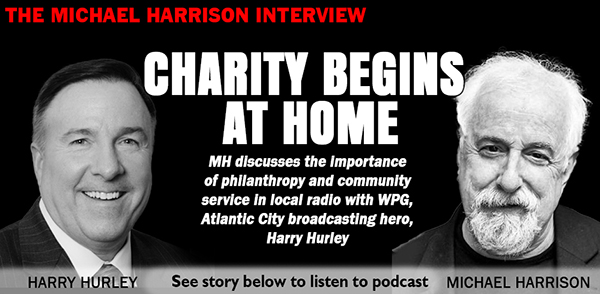
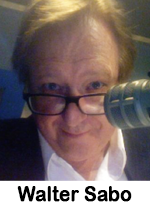 Dependency upon a PPM panel to deliver high time spent listening is a bad business model. Would you rather count on one person listening for one hour or four people listening for 15 minutes? Right.
Dependency upon a PPM panel to deliver high time spent listening is a bad business model. Would you rather count on one person listening for one hour or four people listening for 15 minutes? Right.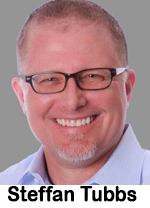 work. In a Westword profile, Tubbs talks about his ascent in the news business, his plans for the “final chapter” of his working life, and his current film project about the deadly drug fentanyl. Locally, Tubbs has caused controversy with his 2020 documentary, Denver in Decay. About that film, Tubbs tells Westword, “That documentary kind of put me on the map as being one of the most hated media members by local politicians in Colorado in recent memory, and I embrace that. But with all the hate and praise, the one thing no one has ever said is that Denver in Decay is inaccurate. You can say all you want if you don’t like the messaging, but you can’t attack the accuracy or the credibility.”
work. In a Westword profile, Tubbs talks about his ascent in the news business, his plans for the “final chapter” of his working life, and his current film project about the deadly drug fentanyl. Locally, Tubbs has caused controversy with his 2020 documentary, Denver in Decay. About that film, Tubbs tells Westword, “That documentary kind of put me on the map as being one of the most hated media members by local politicians in Colorado in recent memory, and I embrace that. But with all the hate and praise, the one thing no one has ever said is that Denver in Decay is inaccurate. You can say all you want if you don’t like the messaging, but you can’t attack the accuracy or the credibility.”  Westwood One’s “Dan Bongino Show” and the “Chris Plante Show,” plus Ben Shaprio and FNC’s Guy Benson. KTUC program director Herb Crowe states, “We’re thrilled to unveil ‘Freedom 1400,’ Tucson’s Conservative Talk Station. As we embark on this exciting journey, we’re committed to providing a platform for open dialogues, diverse viewpoints, and robust discussions that matter to our community. With our esteemed lineup of talk show hosts, we’re confident that ‘Freedom 1400’ will become an essential source of information and insight for our listeners.”
Westwood One’s “Dan Bongino Show” and the “Chris Plante Show,” plus Ben Shaprio and FNC’s Guy Benson. KTUC program director Herb Crowe states, “We’re thrilled to unveil ‘Freedom 1400,’ Tucson’s Conservative Talk Station. As we embark on this exciting journey, we’re committed to providing a platform for open dialogues, diverse viewpoints, and robust discussions that matter to our community. With our esteemed lineup of talk show hosts, we’re confident that ‘Freedom 1400’ will become an essential source of information and insight for our listeners.”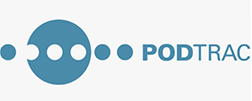 “The Daily” ranked #1 (based on unique U.S. monthly audience). NBC News’ “Dateline NBC” came in #3 and NPR’s “NPR News Now” was #4. The lone talk radio personality whose podcast landed in Podtrac’s Top 20 was Dan Bongino. His Cumulus Podcast Network show ranked #11.
“The Daily” ranked #1 (based on unique U.S. monthly audience). NBC News’ “Dateline NBC” came in #3 and NPR’s “NPR News Now” was #4. The lone talk radio personality whose podcast landed in Podtrac’s Top 20 was Dan Bongino. His Cumulus Podcast Network show ranked #11.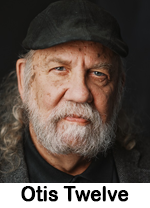 on August 8 during the organization’s annual convention. Among the three 2023 inductees is former talk radio personality and current classical music KVNO-FM, Omaha morning host Otis Twelve. His radio career began in 1973 and in 1993 he became morning host at news/talk KFAB, Omaha. He served as a talk host on crosstown KKAR, Omaha from 1999 through 2001. He also served as a movie critic for TV stations KETV and then KPTM from 1984 to 1996.
on August 8 during the organization’s annual convention. Among the three 2023 inductees is former talk radio personality and current classical music KVNO-FM, Omaha morning host Otis Twelve. His radio career began in 1973 and in 1993 he became morning host at news/talk KFAB, Omaha. He served as a talk host on crosstown KKAR, Omaha from 1999 through 2001. He also served as a movie critic for TV stations KETV and then KPTM from 1984 to 1996.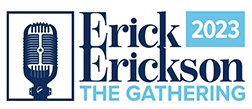 platforms. He says this year there are attendees from 47 states coming to the sold-out program. Erickson says, “This is the tenth of these I have done, and I have to thank Charlie, my producer, for doing so much of the heavy lifting while I have concentrated on doing my show. The format for each individually named speaker is a conversation on stage with me asking them questions from the attendees. The attendees will shortly receive a survey link where they can submit questions for me to incorporate into the conversations. The theme of the conference this year is ‘Forward: Which Way.’”
platforms. He says this year there are attendees from 47 states coming to the sold-out program. Erickson says, “This is the tenth of these I have done, and I have to thank Charlie, my producer, for doing so much of the heavy lifting while I have concentrated on doing my show. The format for each individually named speaker is a conversation on stage with me asking them questions from the attendees. The attendees will shortly receive a survey link where they can submit questions for me to incorporate into the conversations. The theme of the conference this year is ‘Forward: Which Way.’”